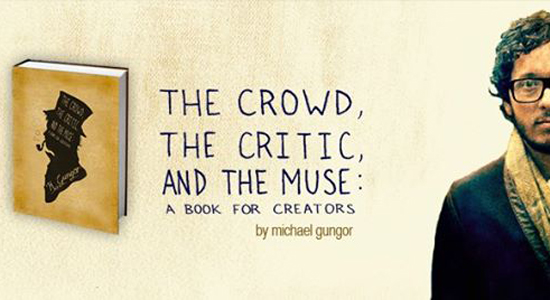 Mree’s second self-produced album, Winterwell, is a passionate blend of heartfelt acoustic folk and plush electronic textures, brought to life by her rich, multi-layered vocals. Mree’s lush harmonies float in and out of the mix like perfumed clouds, drawing you into a dizzying swirl of muted colors and ambiguous emotions. Armed with a guitar and an effects pedal that allows her to loop her vocals into an ever-shifting collage of sound, Mree is able to reproduce most of the album when she plays live. The New Jersey multi-instrumentalist will be guest editing magnetmagazine.com all week. Read our brand new feature on her.
Mree’s second self-produced album, Winterwell, is a passionate blend of heartfelt acoustic folk and plush electronic textures, brought to life by her rich, multi-layered vocals. Mree’s lush harmonies float in and out of the mix like perfumed clouds, drawing you into a dizzying swirl of muted colors and ambiguous emotions. Armed with a guitar and an effects pedal that allows her to loop her vocals into an ever-shifting collage of sound, Mree is able to reproduce most of the album when she plays live. The New Jersey multi-instrumentalist will be guest editing magnetmagazine.com all week. Read our brand new feature on her.

Mree: “Part of the reason people aren’t building cathedrals anymore is that we are too lazy and spoiled for the pain and work that they demand from us. This sort of laziness leads to an artistic narcissism that creates art as a mere emotional expression of the ego rather than an intentional and profound re-ordering or re-imagining of the world,” (82 Gungor).
I don’t read half as much as I’d like to, but I’m glad to have this one handy. My friend, Tom Crouch, bought me the book, and I’m currently about halfway through it. In The Crowd, The Critic, And The Muse, Gungor discusses the creative process: the drives and dry-spells, the purpose of art, our goals and expectations, and where it fits in the world (to name a few). So far, I think it’s a great eye-opening exploration of the creative process that I recommend to creators of all sorts.
He does talk about religion, which made me a tad skeptical at first (being as though I am not religious), but does so in a way that helps to extend his ideas on art. A lot of what he had to say about it fell in line with my beliefs, as well as what I had been learning about in college. Last semester, I took a class called “Writing The Essay: The World Through Art,” where we explored the workings of the creative process. The deeper we discussed, the more complex the word “art” became. What is art and why do we make it?
I think good art conjures up a stirring within its audience, a tug at the soul with a struggle of some sort. Surely, you can appreciate a work for its technical execution—the production behind the music, the precision in the brush strokes. But without something behind it, something to challenge, to question, to awaken and stir, it only floats on the surface of the water. Good art goes deeper. Good art is troublesome (in the best way possible). “Life ends when [that] struggle ends. So does good art.” (83 Gungor).
Video after the jump.






